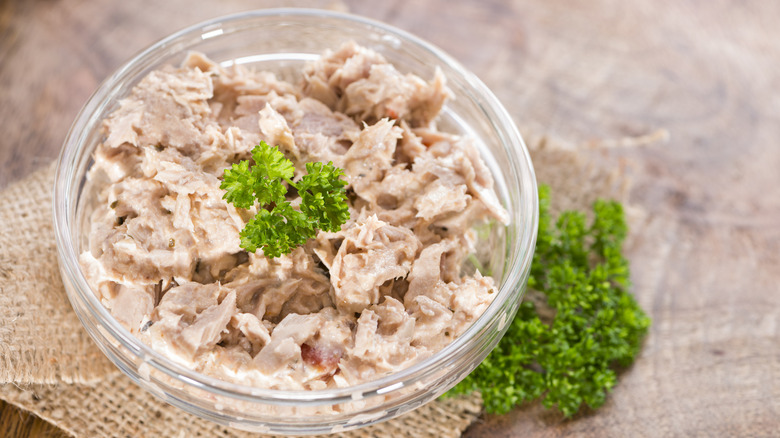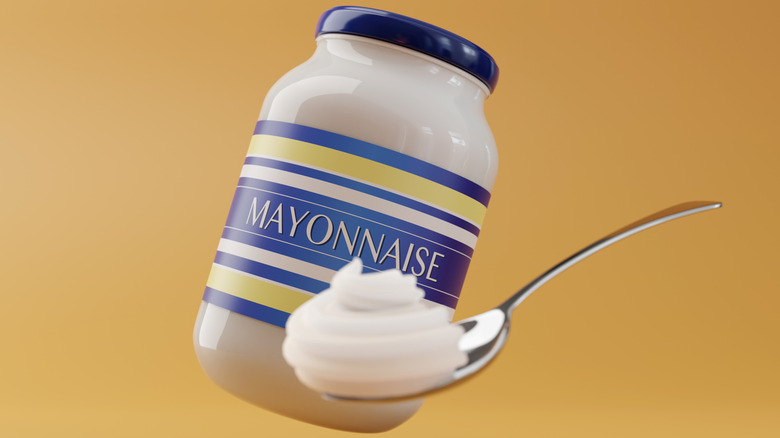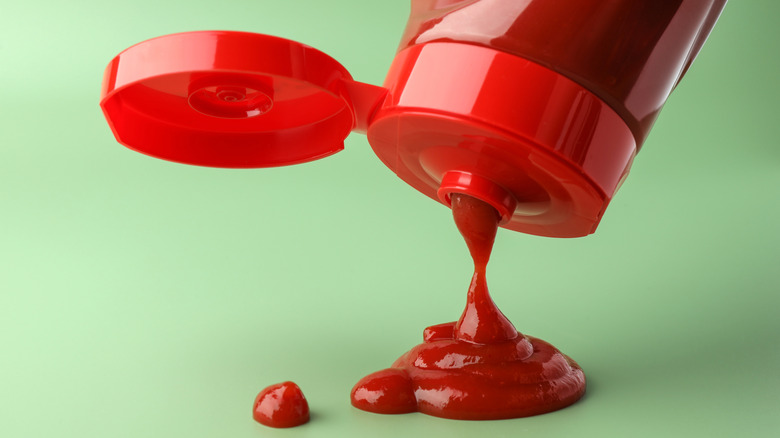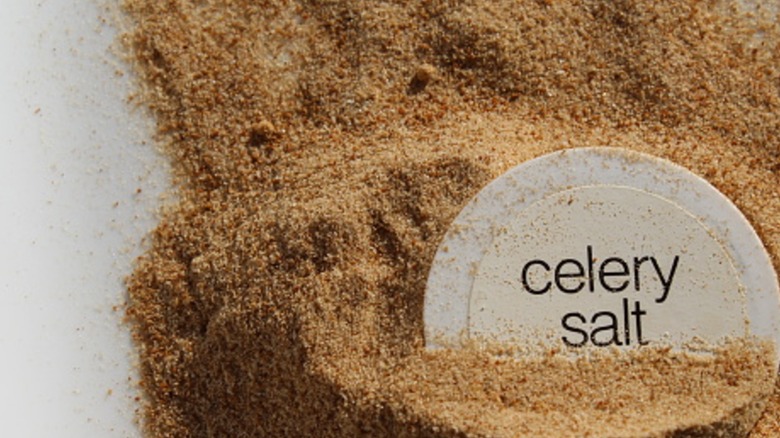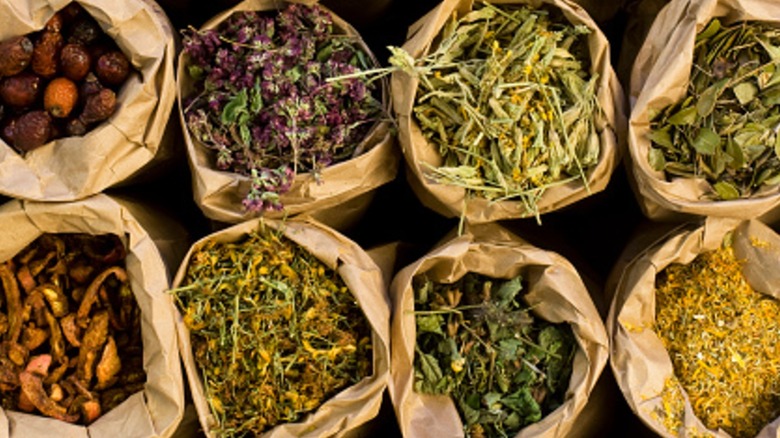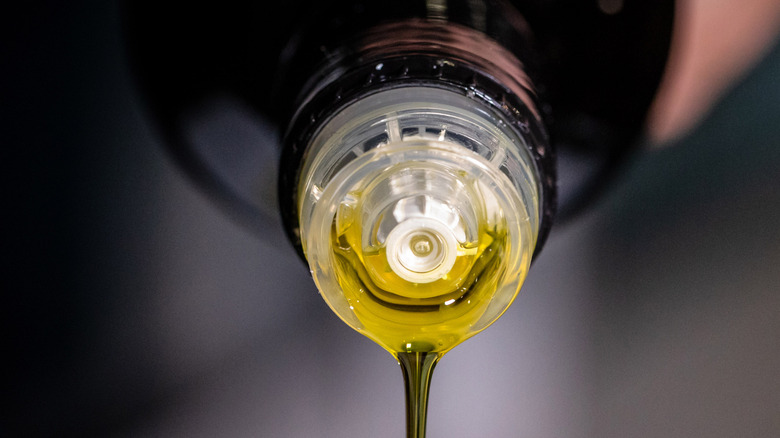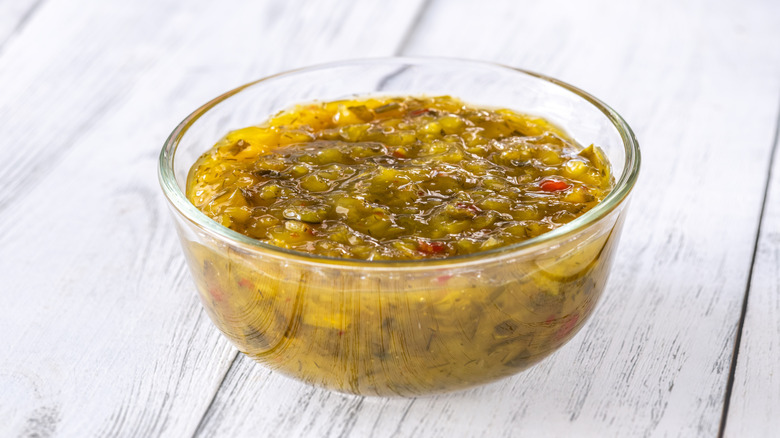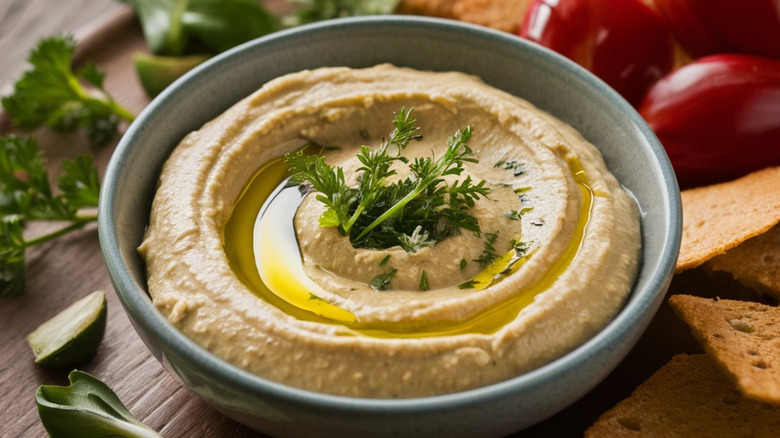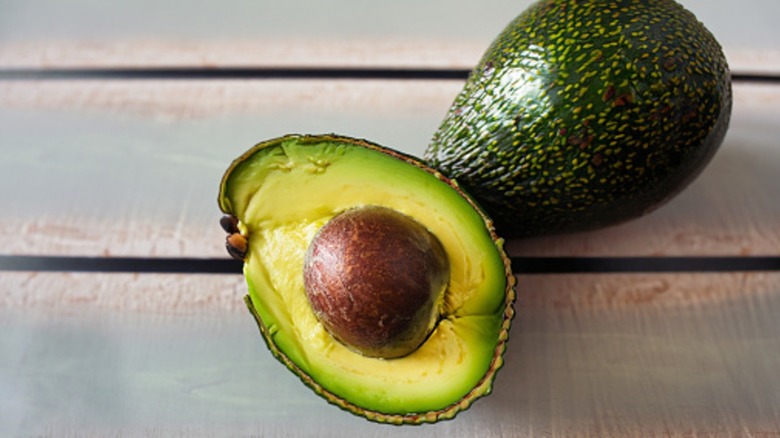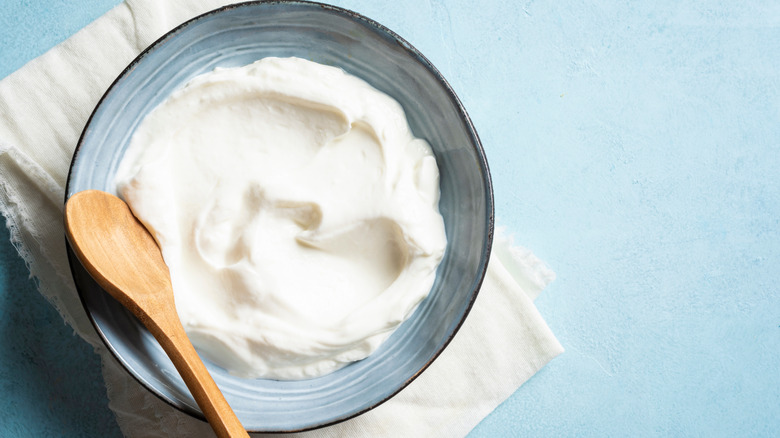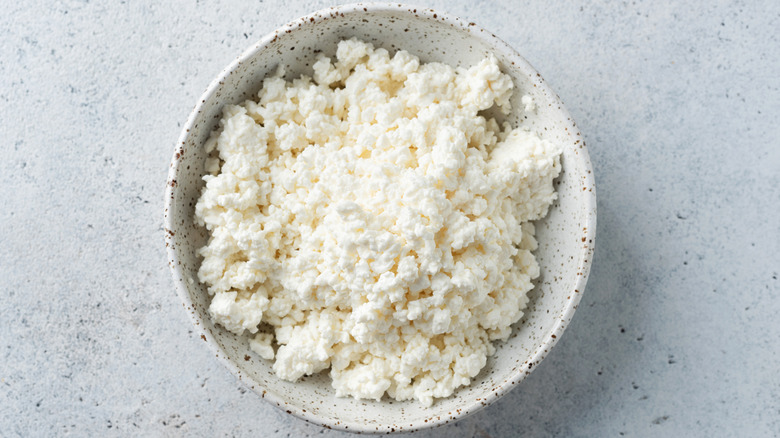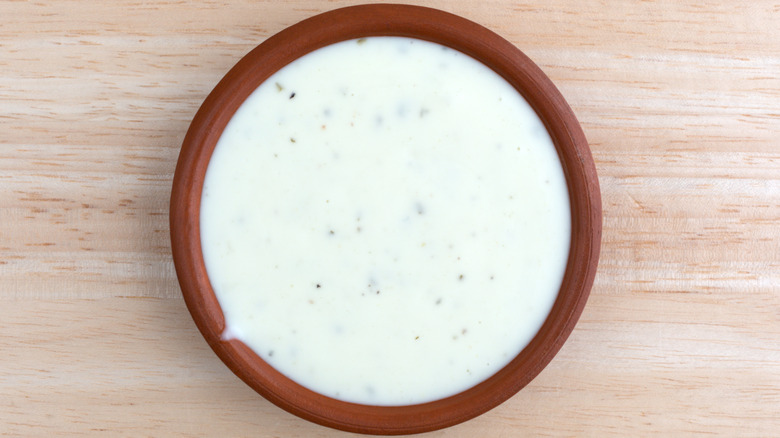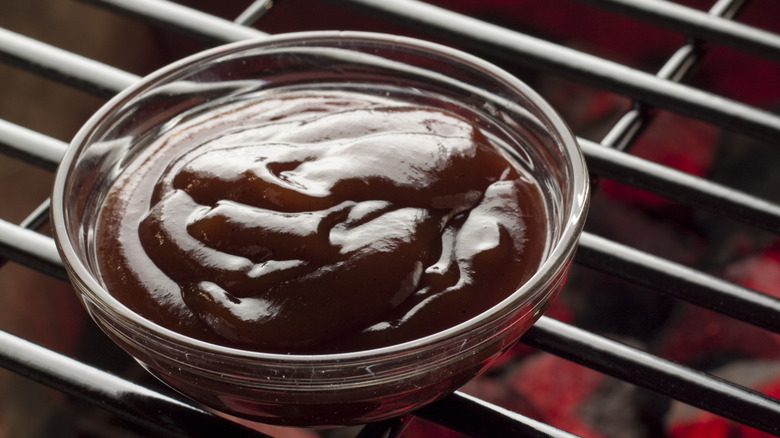Avoid Adding These 12 Condiments To Your Tuna Salad
When you're in the kitchen and at a loss for ideas, tuna salad is one of those go-to comfort recipes that comes together in a jiffy. We've usually got all the ingredients on hand, and for being so simple, it always hits the spot. Spread it on some bread or toast for a light dinner or lunch, or snack on it with crackers or iceberg lettuce. We wouldn't even judge if you ate it straight from the bowl with a spoon.
Ultimately, the fishy dish is adored for its simplicity. While we call it a salad, its foundational ingredients are tuna and mayo, but from there you can get as creative as you'd like. The creamy salad balances a pleasant contrast between sweet, fishy, fatty, and mild, and goes great with a little acidity or brightness. Think of celery, red onion, or sliced grapes as some simple ways to punch up your tuna salad. Although its overall texture is smooth, a little crunch goes a long way, too.
Maybe there's no need to mess with such perfection, but there's also no harm in experimenting with new flavors, ingredients, or condiments. Just be aware that while a dab of certain condiments might work, others simply don't make sense. The worst offenders could ruin any intended textures or flavors, or even give your tuna salad an identity crisis. Check out our tips below and take note which of these condiments to avoid when making tuna salad.
Low-quality mayo
When whipping up your tuna salad, we probably don't need to remind you that after tuna, the most important ingredient is mayo. While it's basically instinctual to reach for the creamy condiment, don't be fooled into thinking that any old jar will do the trick. Mayonnaise is the binding and driving factor of your tuna salad, establishing a rich foundation to bring together the rest of the ingredients, while also contrasting nicely with tuna's fishiness. Go for a low-quality mayo, and your tuna salad just won't hit the spot.
According to the FDA, a true mayo must include at least 65% vegetable oil, alongside other ingredients like eggs and vinegar. These three pillar components give the condiment its smooth and fatty flavors. Low-quality mayos –– whether by messing with the proportions or adding unnecessary ingredients –– can disrupt the flavor and texture in your tuna salad. Miracle Whip, for example, is not even considered real mayonnaise, due to less oil. It compensates with water and high-fructose corn syrup, resulting in a runny and disproportionately sweet tuna salad. Even a trusted brand like Hellman's Real Mayonnaise contains preservatives like calcium disodium EDTA.
For the highest-quality mayos, check for organic labels and scan the list of ingredients for any sneaky additions. Kewpie mayonnaise is an intriguing choice, since the Japanese condiment uses only egg yolks for an extra-velvety texture, and additional vinegar for the perfect brightness in a tuna salad. You can even make your American mayos taste Japanese at home.
Ketchup
While not as egregious as asking for it at a Michelin-star restaurant, there's still something wrong about adding ketchup to your tuna salad. Plenty of cuisines pair tomatoes with fish, but we probably overuse the sweet and saucy condiment, and it definitely has no place near the tuna bowl.
Surprisingly, it's believed that the beloved condiment originated as a Chinese sauce that was made of fermented fish. The British later tried to replicate the sauce's fishy flavors, eventually amounting to the tomato, vinegar, and sugar blend we know today.
The thing is, however, the mayonnaise in your tuna salad is already doing everything the ketchup could –– and better. Mayo has a little sugar and vinegar, plus loads of creaminess. A great tuna salad should be subtle and smooth, with touches of acidity and sweetness. Ketchup, on the other hand, comes in like a pungent kick to the face. It's overpowering, acidic, and watery, creating a striking dissonance of flavors. It goes overboard with the sugar content, too. Most store-bought brands are overly sweet or loaded with high-fructose corn syrup.
For the best tuna salad, consider adding lemon or vinegar for brightness; then a sprinkle of sugar if it's lacking any sweetness. You could also use fresh tomato slices; just make sure to add them right before eating so nothing gets soggy.
Celery salt
Like the name implies, celery salt is the simple combination of ground celery seeds and salt. The resulting seasoning boasts a mildly peppery and grassy flavor, with a spark of sweetness and finishing bitterness. You'll find celery salt as an addition in Old Bay seasoning or even on the rim of your Bloody Mary glass. While we're not saying it should be strictly prohibited from your tuna salads, we'd like to point out there's a far superior, more obvious, alternative: fresh, diced celery.
Even the most expertly prepared tuna salads can sometimes look and taste a bit, well, mushy. Thankfully, you can easily solve this mush with a little texture variation. Adding diced celery is one of the easiest ways to give your tuna salad a little crunch, along with a fresher, brighter, and more intriguing flavor that celery salt just can't match. Another risk with celery salt is accidentally adding too much, resulting in a wincingly salty sandwich or potentially ruined salad. A dash of celery salt could also easily get lost amid the other flavors in your tuna salad, whereas diced celery provides a juicy, more satisfying bite that's hard to miss.
While celery salt might be great on some big slices of heirloom tomatoes or deviled eggs, you can make your tuna salad a lot more interesting with other additions. And if it lacks any salt, just sprinkle some on top before serving.
Dried herbs
Herbs are the culinary muses that lend our recipes a soft and earthy touch, and while there's definitely space for dried herbs in your cooking repertoire, tuna salad just isn't the spot. To maximize the flavor of your tuna salad –– and avoid wasting any ingredients –– we'd recommend going the extra mile and snipping some fresh herbs from the garden or picking up a batch at the grocery store.
For one, dried herbs tend to be more robust and almost dusty compared to their fresh counterparts, which boast bright and delicate flavors. Fresh herbs flaunt a certain grassiness and are best eaten raw, providing a nice yet straightforward touch in our salads. Take, for example, the irresistible allure of fresh cilantro in a bowl of guacamole. Dried herbs, on the other hand, are more complex yet much less noticeable when eaten raw. Instead, they require simmering and cooking in stews, sauces, or soups to really express their flavors.
Their taste could easily get lost when tossed into a tuna salad, not to mention the discomfort of biting into something sharp like dried rosemary or thyme. Another consideration is that dried herbs can in fact expire –– we're looking at that five-year-old jar of parsley you've got in the pantry –– losing flavor and becoming even "dustier." To make the most out of your kitchen stock and tuna salad, chop a bit of fresh parsley and dill weed –– or oregano and basil –– and toss them into the salad for a more flavorful bite.
Olive oil
When you set out to make your tuna salad, your first thought might be to incorporate olive oil in some way because... it's healthier, right? We know extra virgin olive oil is more nutrient-dense and flavorful compared to refined oils, but it's going to reap some unwanted consequences on your tuna salad.
Firstly, pay attention to the most common types of oil used in supermarket mayos. They're typically neutral oils –– oils that have been refined to have very little taste –– like safflower or canola. These oils work wonders in a tuna salad because they don't distract from the flavors of the fish and they highlight the mayo's inherent creaminess, working as a kind of blank canvas for your other ingredients. It's not only more costly, but whipping up a homemade mayo with olive oil could result in a sharp and off-putting flavor. Also, when olive oil is emulsified into sauces, the olive's bitterness is typically more pronounced.
And if you've used a standard mayo but for some reason feel like adding or drizzling olive oil over the tuna salad? Just don't. Celebrated for its pungency, at best the olive oil is going to stick out, if not completely upset the delicate balance of flavors in the salad. Plus, since you're probably not blending your tuna salad into a paste, any olive oil in addition to the mayo will just make things unnecessarily runny and oily.
Pickle relish
Pickle relish is another ingredient that isn't necessarily a ruinous addition to your tuna salad, but there's still a clearly better option. Like we've mentioned, tuna salad can suffer from being too soft and improves vastly with some crunch, which pickle relish just doesn't deliver. If anything, it makes your salad even mushier. Instead, swap the condiment for some simple, sliced pickles. This fresher alternative gives your salad a brighter, more interesting crunch, while still offering what you probably hoped to achieve with the relish: a bit of saltiness, an acidic edge, and some sweetness. In addition, although freshly sliced pickles have relatively high sodium levels, they're nutrient-packed little toppings, full of vitamin K and antioxidants.
Relish, on the other hand, is a far cry health-wise from its fresh counterpart. Popular grocery store finds like Heinz Dill Relish pack 75 milligrams of sodium per tablespoon, and the Sweet Relish variety manages to squeeze in extra sodium on top of 3 grams of sugar per tablespoon. Considering tuna salad typically has higher amounts of sugar, salt, and fats, you're better off ditching condiments like pickle relish, and sticking to additions where you can customize the salt and sugar flavors.
Hummus
You've probably never thought of tuna and hummus in the same sentence –– never mind the same recipe –– but look online and you'll be surprised by the barrage of results. The tahini-based dip is great with pita bread or tortilla chips, but we're thinking it's really not the way to go with your tuna salad. We see the vision (add some unique flavors, give the salad some acidity, etc.), but the Middle Eastern spread's primary downfall is its texture. Thanks to a rougher blend of ingredients, hummus can be gritty or lumpy, while we want something smoother with the occasional crunch in a tuna salad. Some recipes suggest completely swapping out mayo for hummus' healthier and protein-packed chickpeas, but no hummus –– whether store-bought or homemade –– is going to replicate the same creaminess of mayo. Instead, you'll lose the velvety texture for something denser and goopier, more akin to a chip dip then salad. Store-bought varieties can also vary wildly, from too thick to almost gluey, whereas mayo is usually a pretty safe bet across the board.
Using the chickpea condiment gives you less wiggle room with taste, perhaps irrevocably making your salad too acidic, bitter, or sharp. So, why not begin with a mayo base, and add other flavors as you go? Think finely-diced red pepper or jalapeños, for example. You could even try Kewpie mayo with miso in your tuna salad, if you really want to get experimental with other umami flavors.
Avocado
If you want to make your tuna salad a little healthier, you might consider it a no-brainer to swap out mayonnaise for avocado. It's true that the green fruit (yes, avocado is a fruit!) is creamy and subtle, but we're afraid it isn't going to satisfy that hankering for a great tuna salad.
First of all, timing when to cut open an avocado is tricky business. Slice it too early and you've got an underripe, tough, and chalky spread –– not to mention the starchy flavor –– difficult to mash into a salad even if you wanted. Let it get too ripe, though, and it goes sour and mushy. Even at prime ripeness, avocado may be too thick and stiff for a tuna salad, whereas mayo offers a more reliable custard-like consistency every time you open the jar.
Besides texture, mayo makes for a better base in tuna salad thanks to its tangy and subtly sweet flavor. Avocado, on the other hand, lacks any acidity and is more about texture and density than any defining flavors. Some may describe avocado as buttery or nutty –– not exactly the best pairing in a tuna salad, anyway –– but think about the amount of ingredients we throw into guacamole or on avocado toast to achieve some taste.
Finally, don't be tempted to throw in avocado chunks in addition to mayo. They're not going to bring much to salad apart from extra fat, and could make the overall texture enormously dense.
Greek yogurt
Greek yogurt is one of the more popular health-craze substitutes in dressings and sauces, but it's not going to cut it for your tuna salad. Adding a dollop of the Greek condiment on top of your salad doesn't make much sense, but you might opt for it to replace the mayo. Because of natural processes during yogurt's production and storage, however, there's always a bit of whey that separates as excess liquid. Even Greek yogurt, which has more protein and firmness, can still end up a little watery. Sogginess is your worst enemy when preparing a tuna salad –– whether there's too much liquid to hold shape or it's disintegrating the bread –– so you'll want to avoid any condiments that increase this runny risk. Mayo, or even butter, work better for soaking up extra liquid and "waterproofing" your sandwich.
So, while Greek yogurt could work as an alternative in a chip dip where a little separation doesn't matter, it's no match for the uniformity and creaminess of mayo. Yogurt can also have a bit too much of an acidic bite, overpowering the delicate tuna in both flavor and its gloopy density.
Cottage cheese
Another instance of a healthy swap, there's no shortage of recipes online suggesting to use cottage cheese in your tuna salad instead of mayo. Although shredded tuna and cottage cheese don't make for a terrible pairing, we think it loses any semblance of a classic tuna salad, becoming more like an protein-packed post-workout snack. The chunky condiment pales in comparison to the decadence of mayo, lacking the necessary amount of fat to be satisfying, or even hold the salad together for that matter.
Cottage cheese can also be wildly inconsistent, depending on the store-bought brand, the production techniques, or temperature fluctuations between the supermarket and your kitchen. The condiment has a pretty short shelf-life, and even full-fat varieties can quickly become watery and more acidic after opening. This makes for an underwhelming and runny foundation, swapping creaminess for a mouthful of mushy chunks that are definitely not the texture variation you're craving in a great tuna salad. For a more rewarding crunch that also packs some protein, consider adding chopped almonds, or even some savory bacon chunks.
Ranch dressing
Contrary to Midwestern belief, not everything is better with ranch. You might assume the creamy condiment could add an herby, garlicky touch to your tuna salad, but you're better off achieving those nuances with actual, whole ingredients. While it does fall on the spectrum of thicker condiments, don't jump to conclusions. Even the creamiest varieties are much thinner than mayo, easily messing up your tuna salad's desired balance of smoothness and density. The biggest issue, however, is that ranch kind of takes over any other ingredient in its path. Alone, the dressing is a pungent flavor bomb –– which may work well with carrot sticks or french fries –– but it will completely overpower tuna. With the addition of ranch, every bite goes from delicate and carefully crafted to a mouthful of competing flavors. Consider, instead, getting some pungency and spice from roasted garlic in your tuna salad.
Also, given that each brand has its own texture and range of flavors, you're going to run into the problem of inconsistency with ranch. Two different bottles will result in two vastly different tuna salads, from runny and peppery to gloopy and acidic. This variety also encompasses unwanted ingredients, too much sugar, sodium, or additives. We're not saying mayo is a superfood by any means, but ranch affords you less control over your tuna salad's nutritional content.
BBQ sauce
Although we hopefully don't have to tell you this –– for the love of all things culinary –– don't switch out mayo for BBQ sauce in your tuna salad. Just one squirt of the saucy condiment is too much, and frankly, detrimental to your salad's integrity. Like ketchup, the potent flavors of BBQ can overwhelm tuna, a fish that is too delicate to stand up to such a tangy and sweet condiment. Heartier meats like steak and ribs complement the sauce's intense profile well, but tuna? Your salad is going to end up tasting more like a fishy pulled pork. No shade against pulled pork, but we don't really think that's what you're going for.
BBQ usually has some tomato, Worcestershire sauce, and smoky mesquite –– flavors we wouldn't typically associate with tuna salad –– but perhaps most egregious is the copious amounts of sugar in several store-bought sauces. These grocery store finds can be loaded with molasses and honey, or worse, high fructose corn syrup. Instead of throwing in a sugar bomb and messing with subtle flavors, consider more natural sweet mix-ins for your tuna salad, like sliced grapes or dried fruit.
And one final consideration before getting experimental and pulling the BBQ out of the fridge; why not black salt and pepper? Remember that something as simple as a pinch of these everyday seasonings can work wonders for giving your tuna salad extra flavor.
